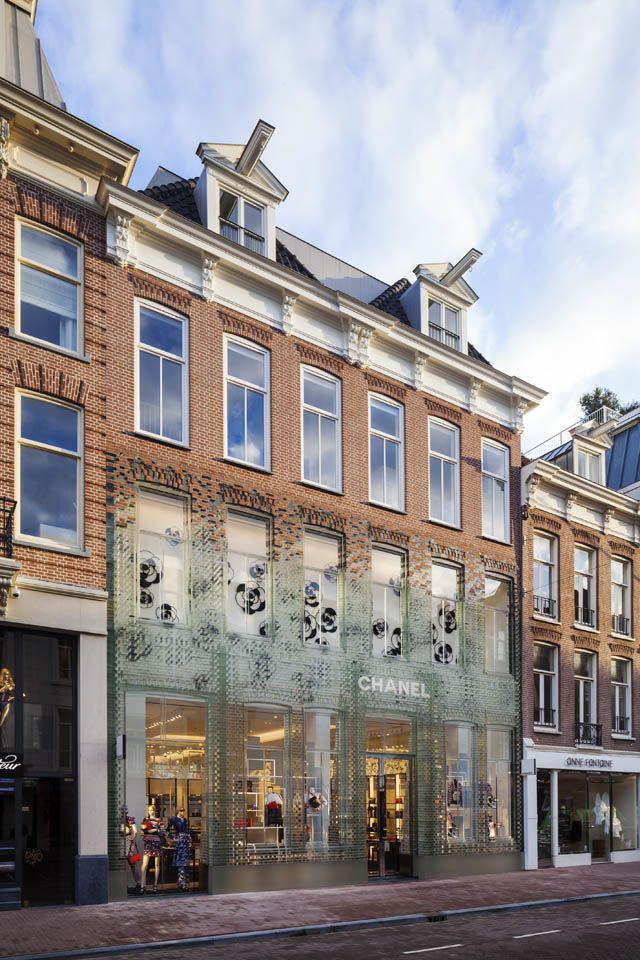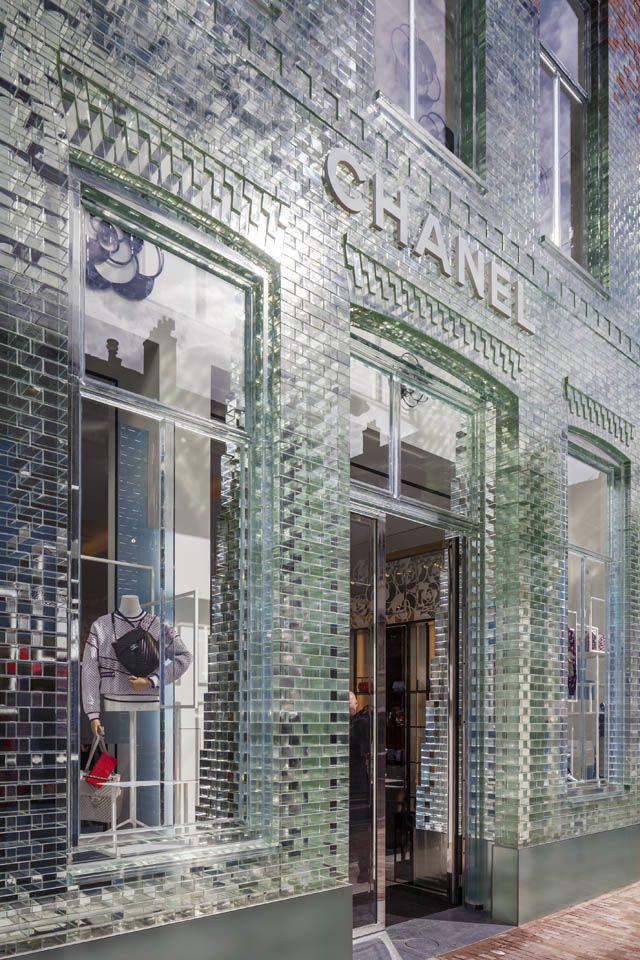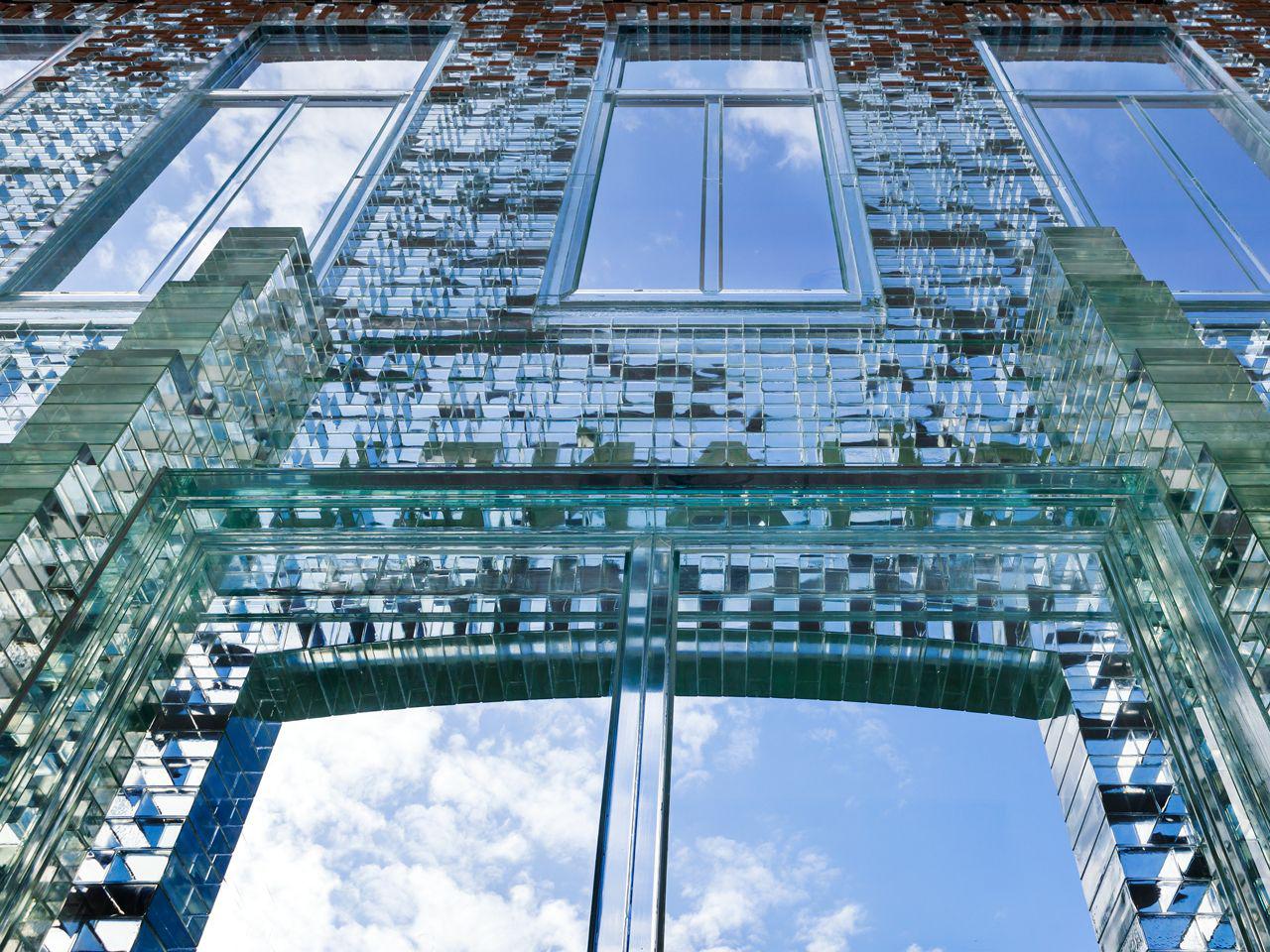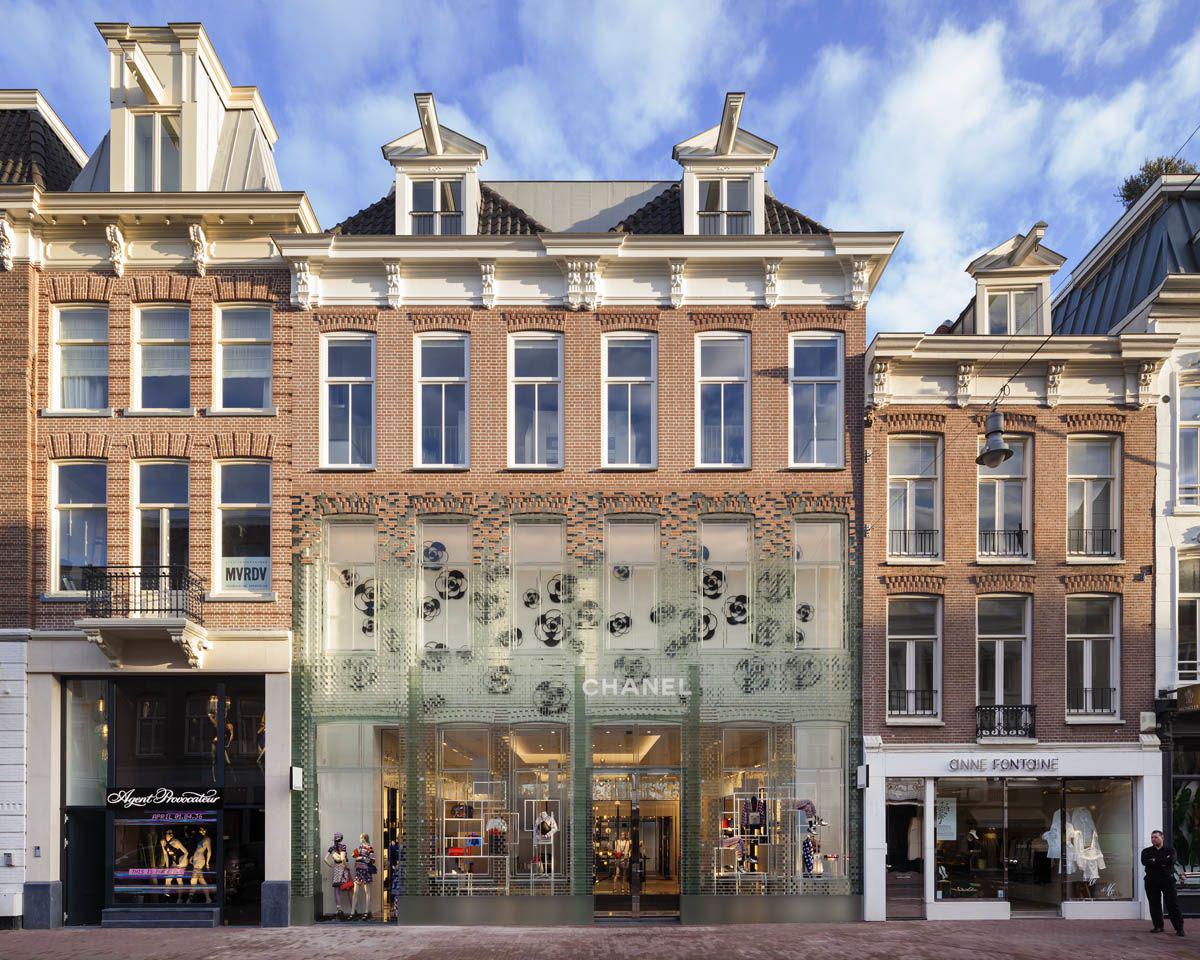Historic neighborhoods in city centers often turn into shopping malls for tourists, with building renovations and global branding that often deface local architecture. Dutch architecture firm MVRDV has just completed a Chanel flagship boutique on P.C. Hooftstraat street in Amsterdam that strikes an innovative compromise, with a gleaming, high-end storefront that celebrates the authentic character of the street by using ethereal glass bricks to create a portion of the original building façade.
The architects tore out the existing building, part of the MVRDV’s Crystal Houses project, and rebuilt it brick by glass brick with a transparent façade that also includes glass window frames and architraves “to evoke the vernacular of the area with the goal to maintain the character of the site,” the architects write in a project description.

Daria Scagliola & Stijn Brakkee
“The design hopes to provide a solution to the loss of local character in shopping areas around the world,” the architects said. “The increased globalisation of retail has led to the homogenisation of high-end shopping streets. Crystal Houses offer the store a window surface that contemporary stores need, whilst maintaining architectural character and individuality.”

Daria Scagliola & Stijn Brakkee
To mimic the original design of the building, they layered glass bricks and recreated window frame details that were updated to comply with current zoning laws and expand the interior space. Glass bricks on the lower portion of the façade fade into traditional terra cotta bricks for apartments located above that blend in seamlessly with neighboring buildings.

Daria Scagliola & Stijn Brakkee
“Crystal Houses make space for a remarkable flagship store, respect the structure of the surroundings and bring a poetic innovation in glass construction,” MVRDV architect and co-founder Winy Maas said. “It enables global brands to combine the overwhelming desire of transparency with a couleur locale and modernity with heritage. It can thus be applied everywhere in our historic centres.”

Daria Scagliola & Stijn Brakkee
The architects said that it took a team of experts a year to experiment with the innovative building technique and to make sure that the new storefront would be structurally sound. Glass bricks were individually cast by Italian company Poesia. Delft University of Technology researchers partnered with engineering firm ABT and contractor Wessels Zeist to develop structural solutions that include using a high-strength transparent glue from German company Delo Industrial Adhesives to cement the bricks together without traditional mortar.

Poesia
“Due to the sensitivity of the materials, an extremely high level of accuracy and craftsmanship was required and a technical development team was onsite throughout the process,” the architects said. “Since this construction is the first of its kind, new construction methods and tools had to be utilised: from high-tech lasers and laboratory grade UV-lamps, to slightly lower-tech Dutch full-fat milk, which, with its low transparency, proved to be an ideal liquid to function as a reflective surface for the levelling of the first layer of bricks.”

MVRDV
Despite its fragile appearance, the architects said that strength tests by the Delft University of Technology team “proved that the glass-construction was in many ways stronger than concrete.”

MVRDV
What’s more, they said, all the glass components are completely recyclable, meaning that imperfect bricks and waste materials were melted, remolded, and repurposed during construction. “Such is also true for the entire façade itself,” they said. “Once the building has reached the end of its life span, the whole facade can be melted down and given a new life.”
